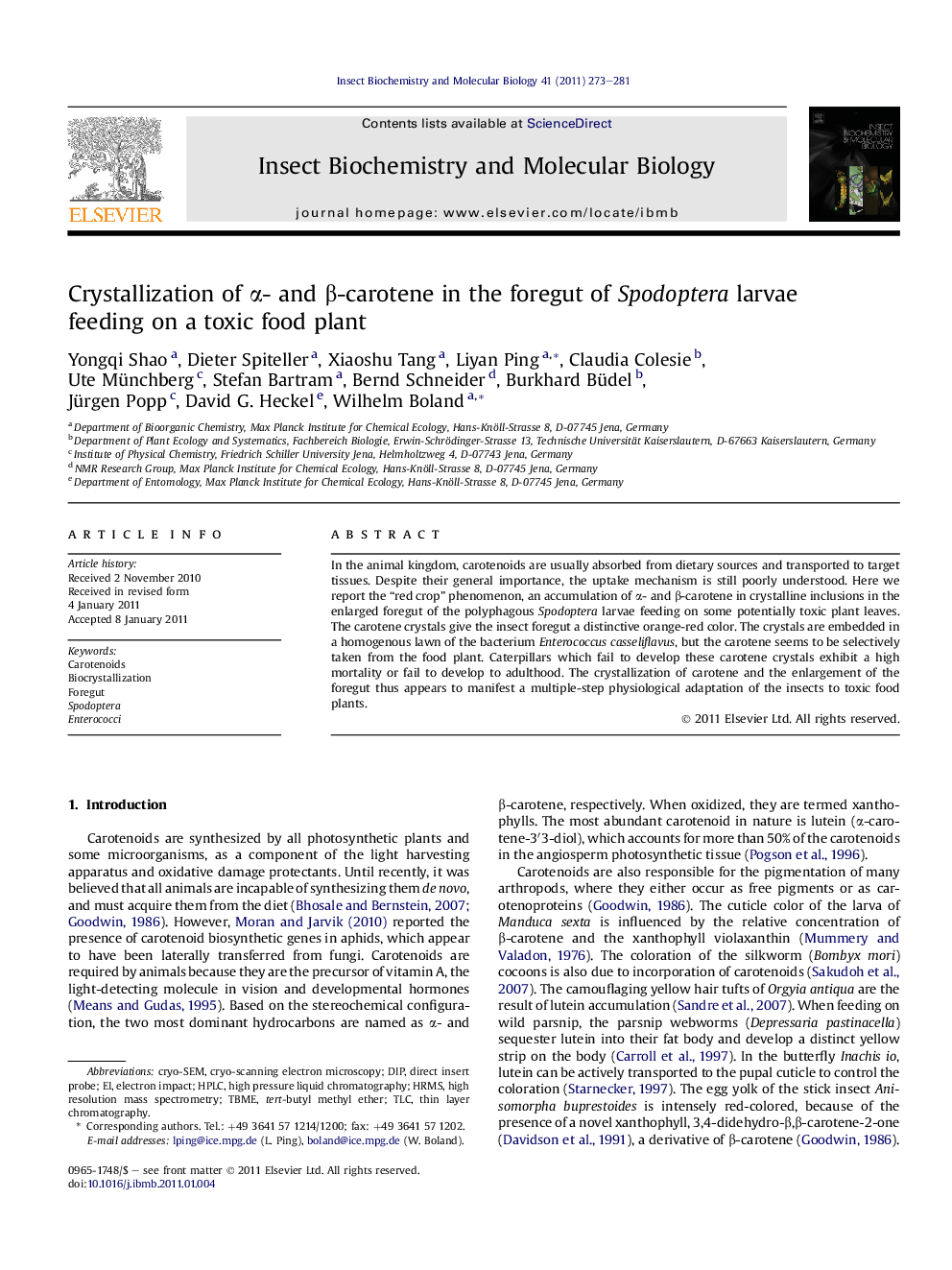| Article ID | Journal | Published Year | Pages | File Type |
|---|---|---|---|---|
| 1982476 | Insect Biochemistry and Molecular Biology | 2011 | 9 Pages |
In the animal kingdom, carotenoids are usually absorbed from dietary sources and transported to target tissues. Despite their general importance, the uptake mechanism is still poorly understood. Here we report the “red crop” phenomenon, an accumulation of α- and β-carotene in crystalline inclusions in the enlarged foregut of the polyphagous Spodoptera larvae feeding on some potentially toxic plant leaves. The carotene crystals give the insect foregut a distinctive orange-red color. The crystals are embedded in a homogenous lawn of the bacterium Enterococcus casseliflavus, but the carotene seems to be selectively taken from the food plant. Caterpillars which fail to develop these carotene crystals exhibit a high mortality or fail to develop to adulthood. The crystallization of carotene and the enlargement of the foregut thus appears to manifest a multiple-step physiological adaptation of the insects to toxic food plants.
Graphical abstractFigure optionsDownload full-size imageDownload high-quality image (74 K)Download as PowerPoint slideHighlights► The study reports the crystallization of α- and β-carotene in the foregut of Spodoptera species. ► Only α- and β-carotene, not other available carotenoids were selectively sequestered into a crystalline state. ► Development of the crystal is accompanied by a physiological adaptation of the insect and a monotonic colonization of Enterococcus casseliflavus. ► The enlarged foregut is covered with carotene crystal on its inner surface. ► Red crop formation enhances the fitness of insects feeding on suboptimal food plants.
